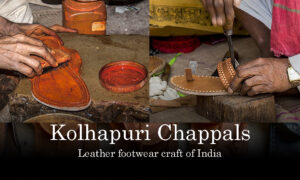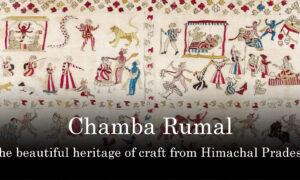Introduction
The story of the evolution of the Sari is a fascination journey into the history of one of world’s most identifiable cultural garments. The sari is gift to mankind from the ancient Indians. It is not just a symbol of the Indian culture and history but stands as a testimonial to the power of a garment that has stood the test of time. Also, because it comes from a culture that strongly idolises its women, the Sari is a very empowering piece of clothing. It is a symbol of the strength and power that is often associated with the women of the Indian sub-continent.
The Sari is a quintessential symbol of Indian culture and its social values. Just like the vibrant rich colours of Indian hostory the sari also embodies these colours and variations as its essence of embracing women of all shapes and sizes. It is a marvel that a piece of fabric can so easily be manipulated in adorning the female figure and making it so alluring.
The evolutionary story of the sari reflects the dynamic socio-cultural landscape of the Indian subcontinent. From its ancient origins to its modern adaptations, it has remained a timeless garment, cherished for its elegance and versatility. This blog will try to touch and mildly explore the evolutionary tale of the sari as it unfolds into the very fabric of life.
Ancient Origins
The history of the Sari dates back to antiquity, with evidence of its existence traced to as early as 2800-1800 BCE during the Indus Valley Civilization. Depictions of women wearing draped garments resembling Saris have been found in archaeological remains such as sculptures and pottery fragments unearthed in Harappa and Mohenjo-Daro.
The Rigveda, one of the oldest Vedic scriptures dating back to 1500 BCE, mentions the term ‘sattika’ as a garment worn by women, believed to be an early form of the Sari. Over time, this garment evolved into the Sari we recognize today, characterized by its unstitched length of cloth draped elegantly around the body.
Influence of Ancient Civilizations
Ancient civilizations played a significant role in shaping the evolution of the Sari, influencing its design, techniques, and cultural significance. The interactions between ancient Indian society and other civilizations, such as the Mesopotamians, Greeks, Persians, and Romans, facilitated the exchange of ideas, materials, and technologies, which left a lasting impact on the development of the Sari.
Trade routes established during antiquity connected India with distant lands, allowing for the exchange of textiles, dyes, and weaving techniques. The Indus Valley Civilization, one of the earliest urban societies in the Indian subcontinent, produced cotton textiles that were traded with Mesopotamia and Egypt. The discovery of spindle whorls and other textile tools at Harappan sites indicates the sophistication of textile production during this period, laying the foundation for future advancements.
Furthermore, the spread of Buddhism and Hinduism to regions beyond India’s borders facilitated cultural exchanges, leading to the adaptation of Sari-like garments in neighboring countries such as Sri Lanka, Nepal, and Southeast Asia.
Medieval Period
During the medieval period, roughly spanning from the 5th to the 15th century, the Sari continued to evolve, incorporating diverse influences from various regions and cultures across the Indian subcontinent. This period witnessed the emergence of regional variations in draping styles, weaving techniques, and decorative elements.
One significant development during this time was the refinement of weaving techniques and the introduction of new materials. The art of weaving intricate patterns into fabrics flourished, giving rise to distinctive regional styles such as the ‘Patola’ of Gujarat, renowned for their double ikat technique, and the ‘Kanjivaram’ of Tamil Nadu, prized for their rich silk and gold zari work.
Innovation in Weaving Techniques
The 14th century witnessed significant advancements in weaving techniques, particularly with the introduction of the pit loom. This innovation revolutionized the textile industry, allowing for the production of finer fabrics and intricate designs. Varanasi emerged as a prominent center for silk weaving, producing luxurious silk Saris adorned with exquisite motifs and embellishments.
Mughal Influence
The Mughal era (16th to 19th century) left an indelible mark on Indian textile traditions, including the Sari. Mughal rulers patronized the arts, leading to the fusion of Persian and Indian design elements. The intricately woven ‘Jamdani’ of Bengal and the opulent ‘Banarasi’ silk Saris are enduring legacies of this period.
Colonial Influence
The advent of European colonial powers in India during the 17th century brought further changes to the Sari. British colonization introduced mechanized textile production, which transformed the industry and led to the mass production of Saris for both domestic and international markets. However, traditional handloom weaving persisted, albeit facing challenges from mechanized mills.
Revival of Handloom Tradition
The revival of handloom Saris in the 20th century was fueled by a confluence of factors, including socio-political movements, cultural resurgence, and economic initiatives aimed at empowering artisan communities.
Independence Movement: The Indian independence movement, spearheaded by leaders like Mahatma Gandhi, emphasized self-sufficiency and the promotion of indigenous industries. Gandhi’s advocacy for khadi, a hand-spun and hand-woven fabric, inspired a renewed interest in traditional weaving practices and indigenous textiles.
Cottage Industries: As India gained independence in 1947, efforts were made to promote cottage industries and rural development. Handloom weaving, with its decentralized production model and emphasis on artisanal skills, became a focal point of these initiatives. Government-sponsored schemes provided financial assistance, training, and marketing support to weavers, enabling them to sustain their craft.
Handloom Cooperatives: Cooperative societies and organizations were established to support handloom weavers and facilitate collective bargaining power. These cooperatives provided access to raw materials, credit facilities, and market linkages, empowering weavers to bypass exploitative middlemen and sell their products directly to consumers.
Cultural Revival: The post-independence era witnessed a resurgence of interest in indigenous crafts and cultural heritage. Designers, intellectuals, and activists championed the cause of handloom textiles, promoting their aesthetic appeal and cultural significance. Fashion shows, exhibitions, and awareness campaigns helped showcase the beauty and diversity of handloom Saris, garnering appreciation and support from both domestic and international audiences.
Government Initiatives: The Indian government implemented various policies and programs to promote handloom weaving and support artisan communities. The establishment of organizations like the Handloom Board and the National Handloom Development Corporation (NHDC) provided institutional support and infrastructure for the handloom sector. In addition, incentives such as tax exemptions, subsidies, and export promotion schemes were introduced to incentivize handloom production and facilitate market access.
Modern Adaptations
In contemporary times, the Sari has evolved to suit the changing lifestyles and fashion preferences of women. Leading fashion designers experiment with fabrics, colors, and draping styles to create innovative interpretations of this timeless garment. Every designer interprets this traditional drape in their own unique way in order to cater to the growing need of the public to consume new styles. This is a true testament to the power of Sari that it can be manipulated in an infinite number of ways without loosing out its core essence of elegance and feminine grace.
Influence of Bollywood
Bollywood, the vibrant Indian film industry, has had a profound influence on the popularity and perception of the Sari. Since its inception, Bollywood has played a pivotal role in shaping fashion trends and celebrating traditional attire, with the Sari being an integral part of the cinematic narrative.
Iconic Film Moments: Some of the most iconic moments in Bollywood history feature actresses draped in stunning Saris. From Madhubala’s ethereal beauty in “Mughal-E-Azam” to Sridevi’s graceful dance sequences in “Chandni” the Sari has been showcased in myriad styles and contexts, capturing the imagination of audiences across generations.
Fashion Inspiration: Bollywood has been a constant source of inspiration for Sari enthusiasts, with leading ladies setting trends and influencing fashion choices. Actresses like Rekha, Aishwarya Rai, and Vidya Balan have become synonymous with elegance and sophistication, often seen donning exquisite drapes on and off-screen.
Red Carpet Glamour: The Sari has also made its mark on the international stage, with Bollywood actresses showcasing their sartorial prowess at prestigious events like the Cannes Film Festival and the Oscars. These red-carpet appearances have garnered global attention, further cementing the Sari’s status as a symbol of Indian elegance and allure.
Fusion of Traditional and Contemporary: Bollywood has embraced the Sari as a versatile garment that can seamlessly transition between traditional and contemporary styles. Designers often experiment with fabrics, drapes, and embellishments to create innovative Sari designs that cater to modern tastes while retaining the essence of tradition.
Promoting Handloom and Craftsmanship: In recent years, there has been a renewed focus on promoting handloom Saris and supporting artisan communities in Bollywood. Celebrities frequently endorse handloom initiatives and sustainable fashion practices, raising awareness about the importance of preserving traditional crafts and supporting local weavers.
Global Appeal
The Sari has transcended cultural boundaries to become a global fashion phenomenon. Celebrities and fashion influencers around the world have embraced the Sari, showcasing its versatility on red carpets and fashion runways. Design collaborations between Indian artisans and international brands have further propelled the Sari onto the global stage.
The Various styles of Sari draping
The Sari, with its versatile fabric and unstitched form, lends itself to a myriad of draping styles, each reflecting the cultural diversity and regional identities of India. One of the most common styles is the Nivi drape, originating from Andhra Pradesh, characterized by pleats at the waist and a pallu (the loose end) draped elegantly over the shoulder. In contrast, the Gujarati style involves draping the pallu from the back to the front, often showcasing intricate embroidery or mirror work.
The Maharashtrian drape, known as the Nauvari or Lugade, involves wrapping the Sari around the legs to form a trouser-like silhouette, perfect for ease of movement. In South India, the Madisar and Kodagu styles are prominent, featuring unique pleating techniques and pallu placements specific to Tamil Nadu and Karnataka respectively. Additionally, the Bengali style, called the Bengali Tant, involves pleating the Sari in the opposite direction with the pallu draped over the left shoulder, creating a distinctive look.
These various draping styles not only enhance the beauty of the Sari but also serve as a cultural expression, preserving the rich heritage of India’s textile traditions.
Conclusion
Thus, we can see that Sari is not just a garment or a piece of fabric wrapped around the female body. It is a living and breathing story of culture and human history itself. It has witnessed countless transformations and yet it remains the same. That is the power of this ubiquitous Indian garment. The evolution of the Sari from ancient times to the present day is a testament to its enduring appeal and cultural significance. As a symbol of grace, tradition, and innovation, this garment continues to captivate hearts and inspire fashion enthusiasts worldwide. Whether draped in timeless classics or contemporary creations, the Sari remains an emblem of elegance and heritage, celebrating the rich tapestry of Indian culture.





























Pingback: Mangbetu Art : Finest Of Congo's Culture In 5 Mins